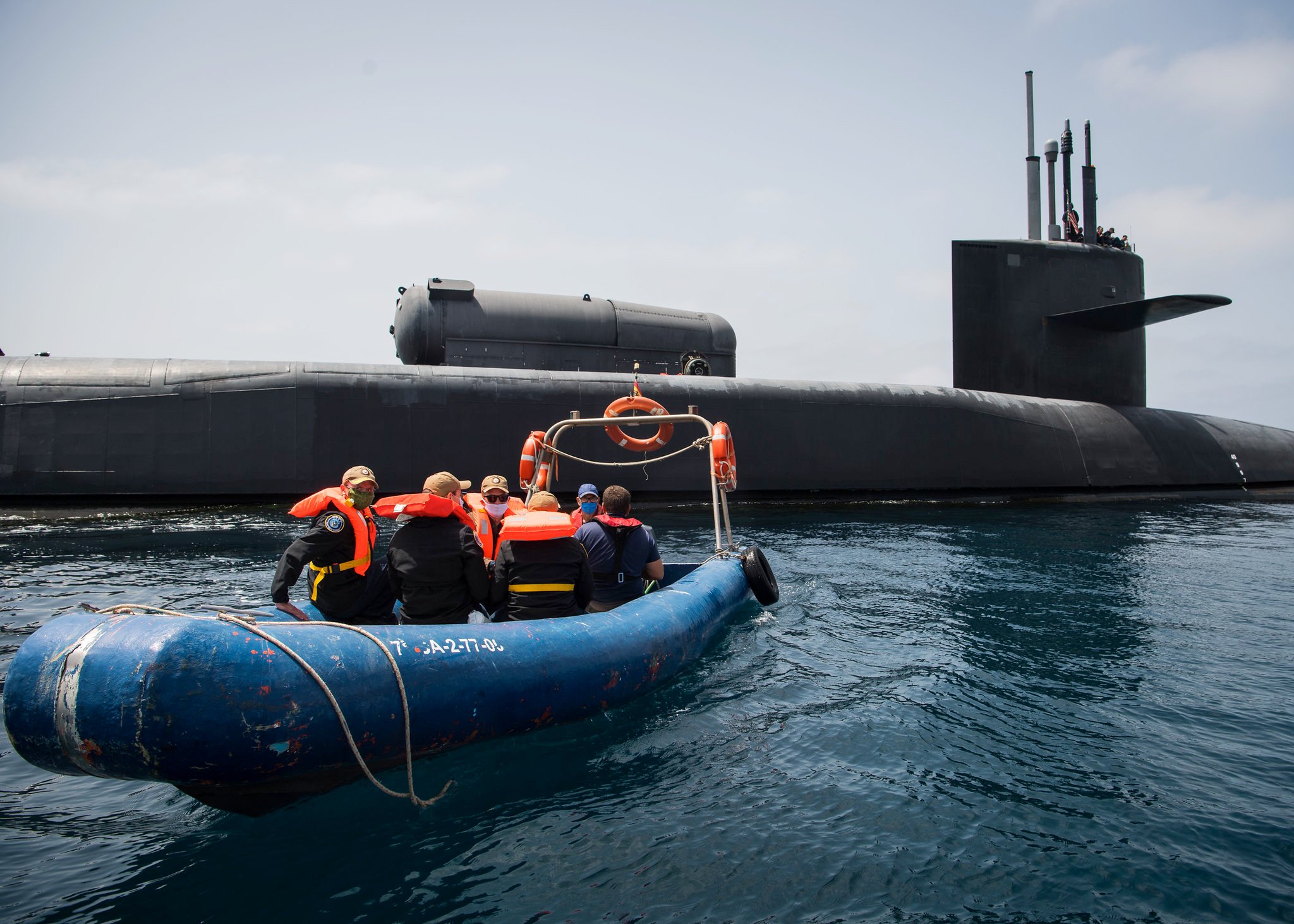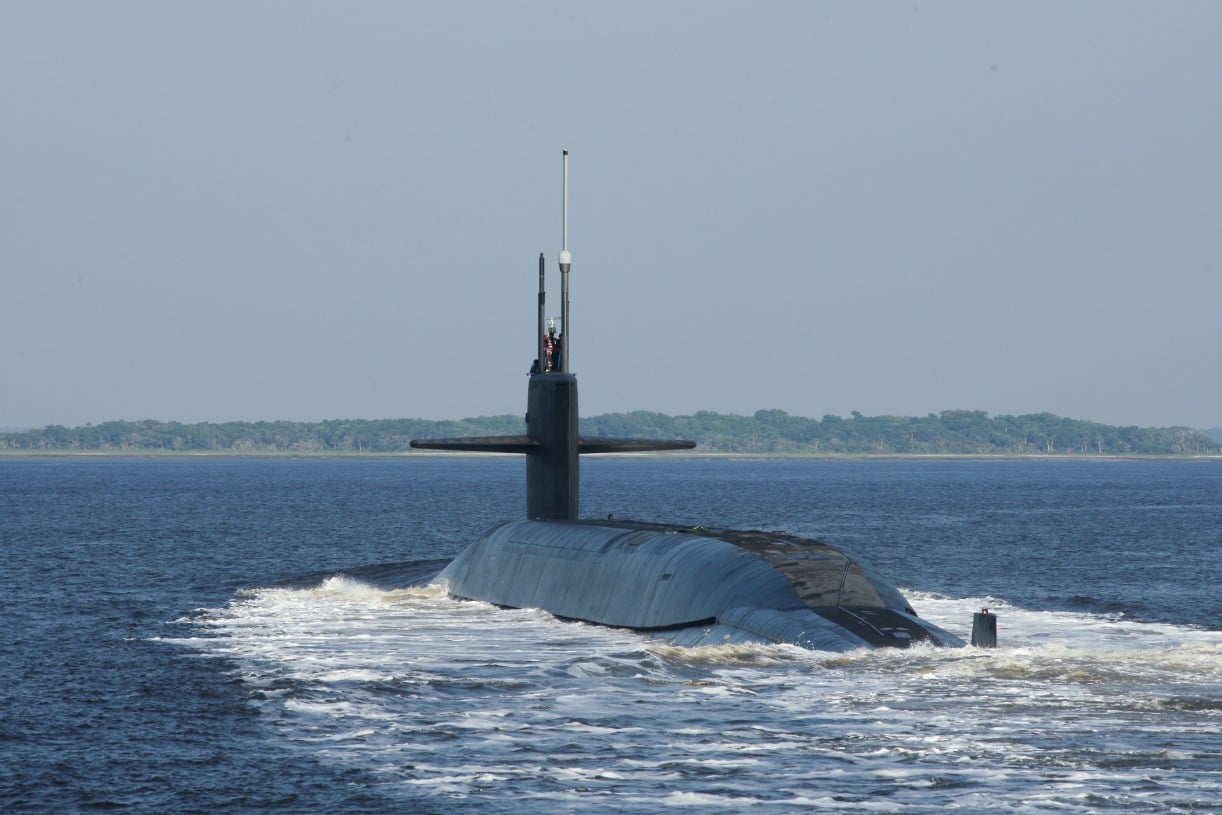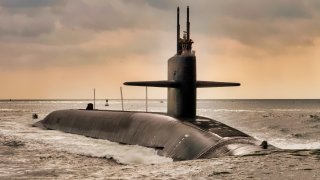Ohio-Class Missile Submarine Nightmare Can Be Summed up in 2 Words
The fall of the USSR and Cold War’s end reshaped U.S. and Russian nuclear strategies, reflected in the Strategic Arms Reduction Treaties (START I & II). These treaties led to significant nuclear drawdowns and a reevaluation of force structures, prompting the U.S. to convert four Ohio-class SSBNs into SSGNs.
Retirement Drama: The fall of the USSR and Cold War’s end reshaped U.S. and Russian nuclear strategies, reflected in the Strategic Arms Reduction Treaties (START I & II). These treaties led to significant nuclear drawdowns and a reevaluation of force structures, prompting the U.S. to convert four Ohio-class SSBNs into SSGNs.

-These new SSGNs carry 154 Tomahawk missiles instead of nuclear Trident ICBMs and support special operations with onboard Dry Combat Submersibles.
-The START treaties were pivotal in nuclear arms reduction and helped repurpose nuclear assets, creating the unique, multi-role Ohio-class SSGNs, although they may soon face retirement.
Inside the Ohio-Class SSGNs: U.S. Navy’s Unique Strike Submarines
The 1990s represented a radical change to the force structure of both the U.S. and former Soviet armed forces.
The fall of the USSR and the end of the Cold War caused national leadership to reassess their priorities and military makeup.
One of the key areas of change was among the nuclear arms of the U.S. and Russia. The START I and II treaties placed limits on the nuclear forces of these two nations requiring drawdowns. The Ohio-class SSGN is one unique outcome of this process.
START Treaties and Ohio-Class SSGN
Leadership in both the U.S. and USSR recognized the incredible destructive power of their nuclear arsenals and the great potential for nuclear annihilation that existed during the Cold War.
The bilateral Strategic Arms Limitations Talks (SALT) began in the 1960s and led to the groundbreak SALT I treaty, the first to place limits on the nuclear disposition of the two countries.
Although SALT II was never ratified, it provided another important stepping stone to the Strategic Arms Reduction Treaties (START).
START I was ratified in July of 1991 between the U.S. and the Soviet Union. The latter’s collapse in December of that year did not hamper enforcement which went into effect in 1994 in Russia and several other former Soviet satellites.

Its first phase placed limits on ICBMs, both in number and warheads carried, while its second addressed strategic bombers and other systems. START II aimed to further the reductions of START I; although it was ratified in 1997 it ultimately never went into effect, instead being replaced by another treaty.
1994 Nuclear Posture Review
Recognizing the need to adapt and address new threats at the close of the Cold War, the Department of Defense Conducted a Bottom-Up Review aimed at “shifting America’s focus away from a strategy designed to meet a global Soviet threat to one oriented toward the new dangers of the post-Cold War era.”
This brainchild of then Secretary of Defense Les Aspin inspired him to order the first Nuclear Posture Review aimed at accomplishing similar goals for the nuclear forces of the U.S.
The review concluded the following: a reduction in SSBNs from 18 to 14, a reduction in B-52s from 94 to 66, no requirement for additional B-2 bombers, all B-1 bombers converted to a conventional role, and maintaining three wings of Minuteman III missiles with single warheads.
SSBNs to SSGNs:
As a result of the review, the U.S. Navy was left with four Ohio-class ballistic missile subs for which it had no use. Because all 18 were already on order, Navy leadership decided to convert the first four rather than scrap them or cancel later orders.
This process resulted in the four Ohio-class SSGNs. While these boats look the same as their SLBM-armed sisters, they carry 154 tomahawk missiles instead of 20 Trident Is. In addition, they can house a platoon of special operations forces and their equipment, such as the Dry Combat Submersible mini-sub.
The START treaties marked a significant inflection point in nuclear non-proliferation around the world. Having fewer nuclear warheads has doubtless made the world a safer, more stable place.
In addition, the START treaties were responsible for the Ohio-class SSGNs, a unique boat in Navy inventory which may soon be retired.
About the Author: Maya Carlin, Defense Expert
Maya Carlin, National Security Writer with The National Interest, is an analyst with the Center for Security Policy and a former Anna Sobol Levy Fellow at IDC Herzliya in Israel. She has by-lines in many publications, including The National Interest, Jerusalem Post, and Times of Israel. You can follow her on Twitter: @MayaCarlin.
Image Credit: Creative Commons.


